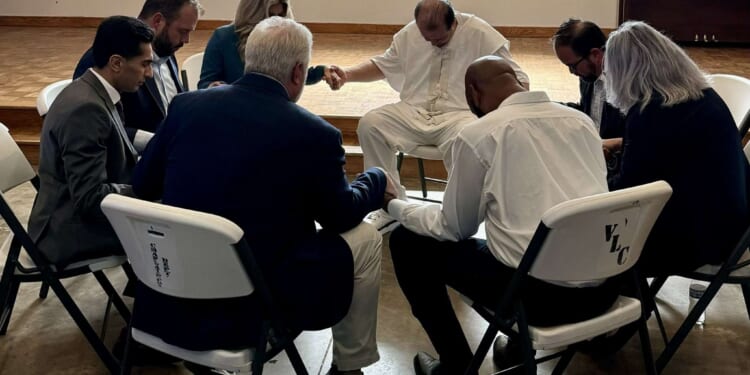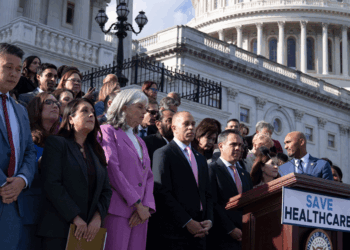Texas’ highest criminal court has stayed the execution of Robert Roberson, a death row inmate who was—for the second time in two years—less than a week away from becoming the first person in the country to be executed based on evidence of what used to be called “shaken baby syndrome.”
In a two-page order, the Texas Court of Criminal Appeals (CCA) on Thursday granted Roberson’s last-ditch request for a stay under a 2013 Texas law, known as the “junk science” writ, which allows new court proceedings for defendants to challenge convictions that relied on now-discredited forensic science. The CCA remanded Roberson’s case to a lower trial court and cited an overturned conviction in another “shaken baby” case that featured testimony from one of the same expert witnesses as in Roberson’s original trial.
The reprieve is the latest twist in a long-running death penalty case that has drawn national attention, and it’s the third time Roberson has avoided the execution chamber since being sentenced to death in 2003, after a jury convicted him of murdering his 2-year-old daughter.
The prosecution in Roberson’s original trial largely relied on expert findings of shaken baby syndrome, which is now called Abusive Head Trauma (AHT). However, the scientific consensus surrounding AHT has shifted considerably in the decades since Roberson’s conviction, and his attorneys argue that the forensic testimony at his original trial has now been discredited, both by advances in science and by previously undiscovered autopsy records that show Roberson’s daughter died of advanced pneumonia rather than being shaken or hit.
In the overturned case that the CCA cited in granting Roberson’s petition, the CCA wrote that “scientific knowledge has evolved regarding SBS and its application,” and that “admissible scientific testimony at trial today would likely yield an acquittal.”
In a press release, Gretchen Sween, an attorney for Roberson, said she is confident a district court will come to a similar conclusion in Roberson’s case once it reviews “the mountain of medical records, scientific studies, expert opinions, and other evidence that proves his very ill little girl died from natural and accidental causes, not shaking or other abuse.”
“Robert adored Nikki, whose death was a tragedy, a horror compounded by Robert’s wrongful conviction that devastated his whole family,” Sween continued. “We are confident that an objective review of the science and medical evidence will show there was no crime.”
Among Roberson’s supporters are the former detective who arrested him, novelist John Grisham, and Supreme Court Justice Sonia Sotomayor, who urged Texas Gov. Gregg Abbott to grant Roberson a 30-day reprieve in a statement accompanying the Supreme Court’s denial of relief last year.
Grisham announced last month that he will publish a non-fiction book next June on Roberson’s case.
Roberson’s case is the highest-stakes example of a bitter dispute over the reliability of AHT testimony that’s been playing out for years in courtrooms around the country. Prosecutors and pediatric abuse specialists say there’s broad scientific consensus around AHT, but innocence groups and advocates for forensic reform have successfully persuaded several state courts otherwise. According to the National Registry of Exonerations, at least 41 parents and caregivers in 18 states convicted based on AHT evidence have been exonerated since 1989.
In 2022, a New Jersey trial court judge barred AHT evidence from a trial, writing that it’s “an assumption packaged as a medical diagnosis, unsupported by any medical or scientific testing.” A state appeals court upheld the ruling, writing that “the very basis of the theory has never been proven.”
Texas prosecutors and Abbott argue that Roberson was convicted based on evidence of AHT and multiple blunt impacts. Roberson’s supporters counter that Abbott and the state’s narrative misrepresents the trial record—there were findings of only one impact site, consistent with Roberson’s story that his daughter fell out of bed in the middle of the night—and understates how critical the testimony on shaken baby syndrome was to his conviction.
Despite the number of exonerations and the level of dispute over AHT testimony, Roberson has faced an uphill battle to overturn his conviction. Last summer, the CCA summarily dismissed Roberson’s petitions, which presented new innocence claims based on previously unrevealed autopsy records, on technical grounds without considering their merits.
Roberson was only saved from a scheduled execution date last October due to an unprecedented intervention by a bipartisan group of Texas lawmakers, who subpoenaed him to testify, launching a complicated legal dispute between multiple branches of the Texas state government.
Texas lawmakers intervened in Roberson’s case not just because of his innocence claims, but because they were concerned Texas courts were misinterpreting and misapplying the junk science writ to wrongly deny post-conviction appeals.
A report last July by the Texas Defender Service, the first comprehensive review of the junk science writ, concluded that the “law systematically fails to provide relief to innocent people convicted based on false forensic evidence.”
The junk science writ helped Roberson avoid another scheduled execution date in 2016, and now again in 2025, but to date, not one capital defendant in Texas has successfully used the writ to overturn a conviction.
Roberson will get another chance to be the first.

















